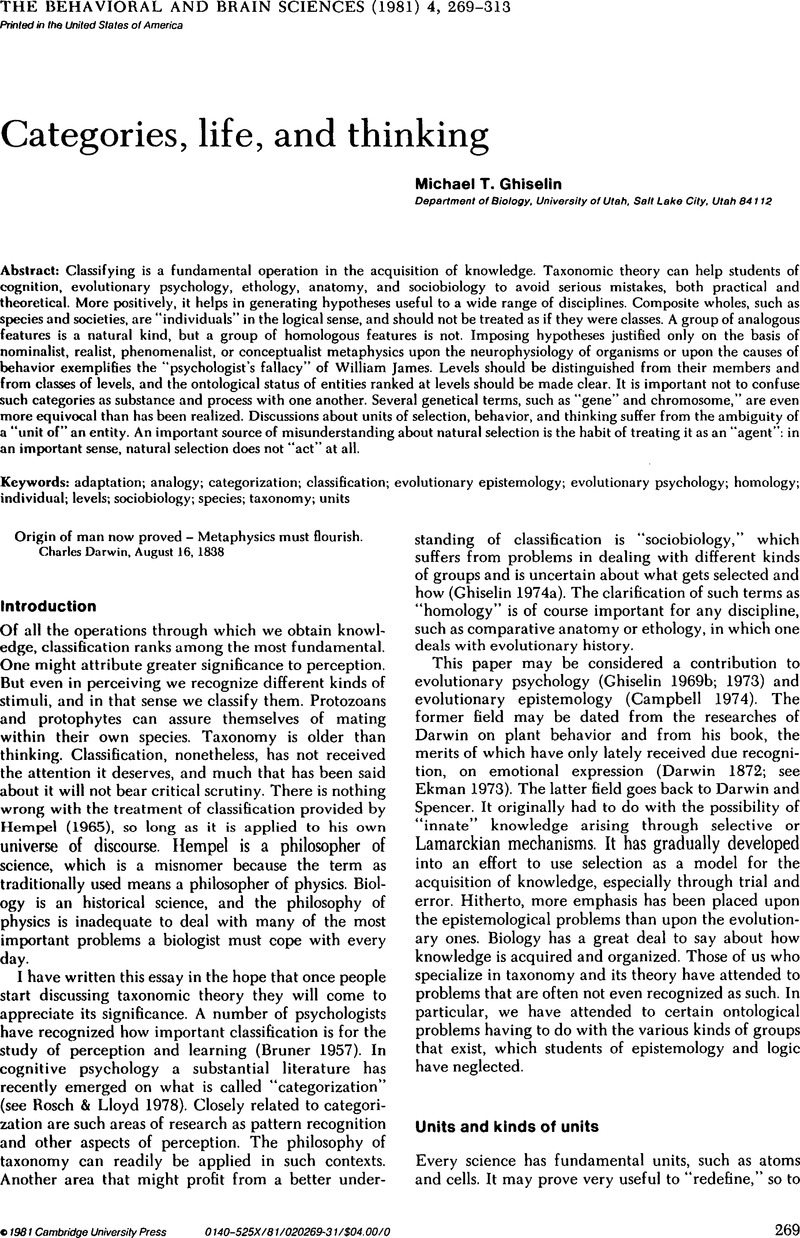Crossref Citations
This article has been cited by the following publications. This list is generated based on data provided by Crossref.
Cruse, Alan
1983.
Anna Wierzbicka, Lingua mentalis: the semantics of natural language. London: Academic Press, 1980. Pp. xi + 367..
Journal of Linguistics,
Vol. 19,
Issue. 1,
p.
265.
Rieppel, Olivier
1986.
Evolutionary Biology.
p.
283.
Mayr, Ernst
1987.
Answers to these comments.
Biology & Philosophy,
Vol. 2,
Issue. 2,
p.
212.
Mahner, Martin
1993.
What is a species?.
Journal for General Philosophy of Science,
Vol. 24,
Issue. 1,
p.
103.
O'Brien, Michael J.
Holland, Thomas D.
Hoard, Robert J.
and
Fox, Gregory L.
1994.
Evolutionary implications of design and performance characteristics of prehistoric pottery.
Journal of Archaeological Method and Theory,
Vol. 1,
Issue. 3,
p.
259.


